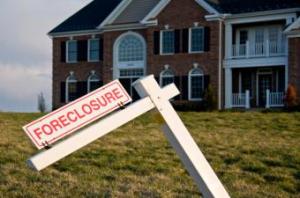The number of homes entering foreclosure has picked up after last year's slowdown, when banks were forced to overhaul their foreclosure practices.
Foreclosure-data firm RealtyTrac said 311,010 properties started the foreclosure process in the second quarter, a 9% increase from the previous quarter and a 6% increase from the second quarter of 2011 — the first year-over-year jump since the fourth quarter of 2009. Moreover, the trend was fairly widespread, with 31 states posting year-to-year increases.
 Since the $25 billion mortgage settlement earlier this year, "Lenders and servicers are slowly but surely catching up with the backlog of delinquent loans that under normal circumstances would have started the foreclosure last year," RealtyTrac CEO Brandon Moore said in a statement. This uptick in foreclosure processing will mean more short sales and bank repossessions later this year and early next year, which will dampen home prices slightly, said Mark Zandi, chief economist for Moody's Analytics.
Since the $25 billion mortgage settlement earlier this year, "Lenders and servicers are slowly but surely catching up with the backlog of delinquent loans that under normal circumstances would have started the foreclosure last year," RealtyTrac CEO Brandon Moore said in a statement. This uptick in foreclosure processing will mean more short sales and bank repossessions later this year and early next year, which will dampen home prices slightly, said Mark Zandi, chief economist for Moody's Analytics.
The numbers
Overall foreclosure activity dropped 8.21% from the same quarter in 2011, with more bank repossessions replaced by short sales, or sales in which the banks agree to take less than the debt owed. For the first half of the year, 1.05 million U.S. properties posted some kind of foreclosure filing – from notice of default to bank repossession — a 2% increase from the previous six months but down 11% from the first half of 2011.
Foreclosure activity, however, did increase from the six-month period a year ago in 20 states, including:
- Indiana: 32% increase
- Pennsylvania: 24% increase
- South Carolina: 23% increase
- Connecticut: 23% increase
- Florida: 23% increase
- Illinois: 22% increase
"Things got bogged down last year, as lenders were caught red-handed with improper processing procedures," said Daren Blomquist, RealtyTrac vice president, who oversees the quarterly report.
Now, with the landmark $25 billion mortgage settlement among the country's largest lenders, state attorneys general and federal government behind them, lenders are moving on the estimated $1.5 billion in loans that are 90 days or more past due.
Properties that enter foreclosure still take some time to complete the process, however. In the second quarter, foreclosures took an average of 378 days — the longest time since 2007 — to move from the initial notice to the completed foreclosure, up from 370 days in the first quarter. Once banks took back a property, it took an average of 195 days from the date of foreclosure to sell, RealtyTrac said, up from 178 days in the first quarter. Properties with delinquent loans that sold before the foreclosure was complete — namely, short sales — took an average of 319 days to sell from the time of the first notice, up from 306 days in the first quarter.
Zandi said he expects another wave of distressed properties to hit the market by the fourth quarter, when the market is typically slow. This distressed inventory will dampen prices, though not by much, he said, given the investor demand for these homes and the large number of expected short sales, which typically sell for more than real-estate-owned properties. "I expect home prices to fall 1% this year and rise 1% next year," Zandi said. "We are not home free [with the recovery] yet." Blomquist and others said it's a healthy thing for these distressed properties, which have hung over the housing market, to be added to the available inventory now, especially given the short supply in many areas.
Washington has had 6,484 foreclosures in 2012 or one out of every 445 households. This represents a 12.37% increase from Q1 2012 and a 45.24% decrease from Q2 in 2011. To find more information on opportunities to invest in distressed properties, please visit www.distressedpropertieswa.com for more information.







1 Response